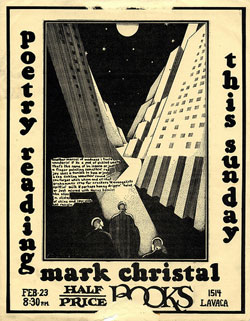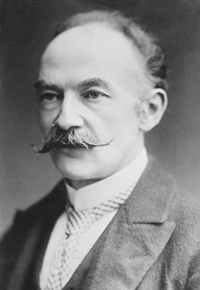Introduction

Source: Poetry Reading Poster, Mark Christal, taoboy49, Flickr
Reading poetry offers some interesting challenges because a poem may not be as straightforward as a short story or novel. Also, a poet uses lines and stanzas rather than paragraphs in order to create emotions and experiences. Figurative language and different poetic forms add to the poem’s meaning and how it is displayed on the page. Because a poem condenses and suggests, the words can mystify and sometimes discourage us. Song lyrics are often poetry set to music. After hearing a song once, you may not understand its entire meaning, but listening to it over and over again brings you new insights and understanding. So “hearing” or reading a poem over and over again—especially a very difficult poem—can help you better understand it. Let’s begin with some pre-reading activities. The poem we’re going to tackle is “Tolerance” written by the British poet Thomas Hardy in 1910.
First impressions
First, think about what the word “tolerance” means.
Drop the words related to being tolerant in the left column and those related to being intolerant in the right column.

Source: Thomas Hardy, Library of Congress, Wikimedia Commons
Read the poem to yourself.
“It is a foolish thing,” said I,
“To bear with such, and pass it by;
Yet so I do, I know not why!”
And at each clash I would surmise
That if I had acted otherwise
I might have saved me many sighs.
But now the only happiness
In looking back that I possess—
Whose lack would leave me
comfortless—
Is to remember I refrained
From masteries I might have gained,
And for my tolerance was disdained;
For see, a tomb. And if it were
I had bent and broke, I should not dare
To linger in the shadows there.
What is your first impression of the poem?
Reread the first and last stanzas. Can you make any predictions about what is happening in this poem?
Type your answers using your notes. When you’re finished, check your understanding.
Sample Responses:
Do you think the speaker may be looking back on his life and possibly thinking about what he had to endure? What kind of satisfaction does the speaker have now?
Close